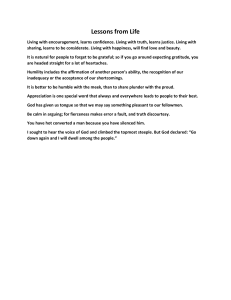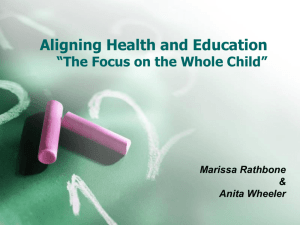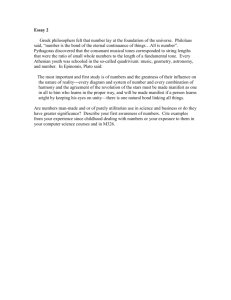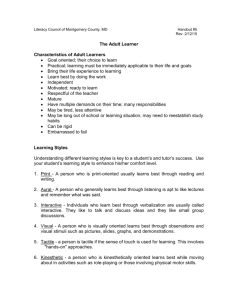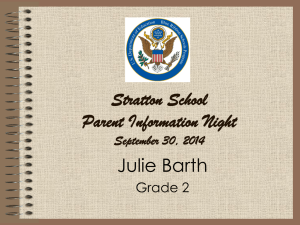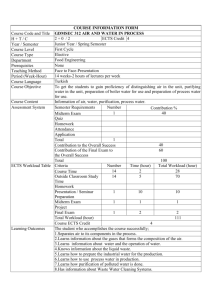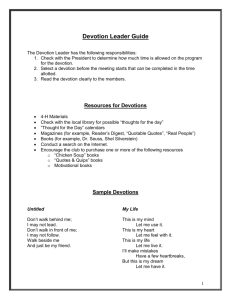group learning - Making Learning Visible
advertisement
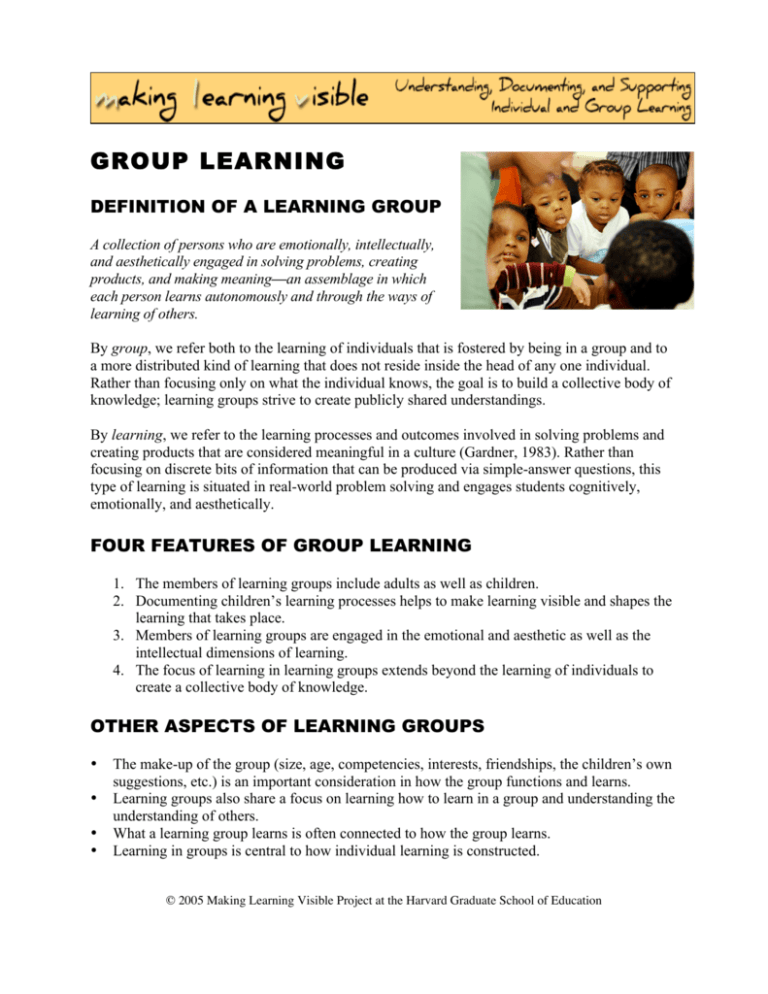
GROUP LEARNING DEFINITION OF A LEARNING GROUP A collection of persons who are emotionally, intellectually, and aesthetically engaged in solving problems, creating products, and making meaning—an assemblage in which each person learns autonomously and through the ways of learning of others. By group, we refer both to the learning of individuals that is fostered by being in a group and to a more distributed kind of learning that does not reside inside the head of any one individual. Rather than focusing only on what the individual knows, the goal is to build a collective body of knowledge; learning groups strive to create publicly shared understandings. By learning, we refer to the learning processes and outcomes involved in solving problems and creating products that are considered meaningful in a culture (Gardner, 1983). Rather than focusing on discrete bits of information that can be produced via simple-answer questions, this type of learning is situated in real-world problem solving and engages students cognitively, emotionally, and aesthetically. FOUR FEATURES OF GROUP LEARNING 1. The members of learning groups include adults as well as children. 2. Documenting children’s learning processes helps to make learning visible and shapes the learning that takes place. 3. Members of learning groups are engaged in the emotional and aesthetic as well as the intellectual dimensions of learning. 4. The focus of learning in learning groups extends beyond the learning of individuals to create a collective body of knowledge. OTHER ASPECTS OF LEARNING GROUPS • • • • The make-up of the group (size, age, competencies, interests, friendships, the children’s own suggestions, etc.) is an important consideration in how the group functions and learns. Learning groups also share a focus on learning how to learn in a group and understanding the understanding of others. What a learning group learns is often connected to how the group learns. Learning in groups is central to how individual learning is constructed. © 2005 Making Learning Visible Project at the Harvard Graduate School of Education
